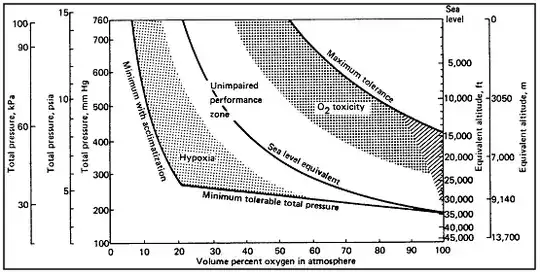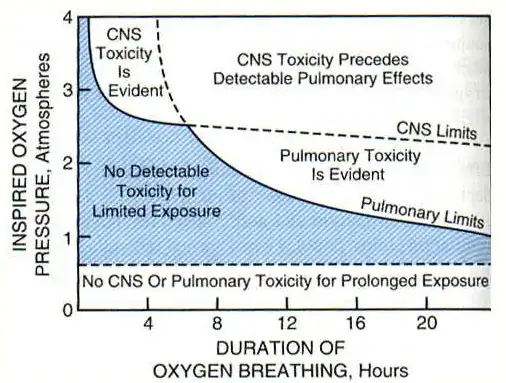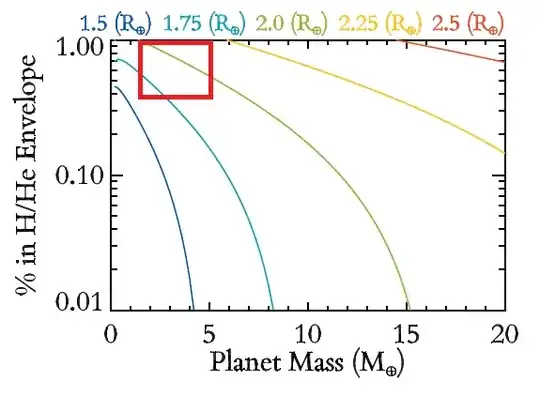There are many good studies on oxygen toxicity. One NASA page reviews many studies on the limits. Tobias (1967) came up with the following graph of the limits of the percent of oxygen vs. the total pressure of the environment:

Really, the limits depend on the rest of the atmosphere. For example, at a total pressure of 90 Kpa, you can have at most an oxygen concentration of about 50%, though effects will begin at about 35%. However, note that in atmospheres that are almost entirely oxygen, combustion becomes an issue. See the Apollo 1 disaster.
Duration is also a necessary factor, as this university page explains:

Oxygen toxicity limits in human beings. The two areas most affected are the CNS and the lungs. The occurrence of toxicity depends upon both the inspired oxygen pressure (PO2) and the duration of exposure. The safe duration of exposure becomes shorter as the inspired PO2 increases. Below 0.5 atmosphere of inspired oxygen, indefinite exposure appears to be safe; between 0.5 and approximately 2 atmospheres, pulmonary toxicity occurs after prolonged exposures but CNS effects are not detectable; above 2 atmospheres, CNS toxicity appears before pulmonary effects are detectable.
In a gas dwarf, how much of the atmosphere is likely to be oxygen? Here's (a modified) Figure 9 from Lopez & Fortney (2013):

I've boxed in the area between $2M_{\oplus}$ and $5M_{\oplus}$, the area where we're likely to see gas dwarfs, at some likely envelope radii. The atmospheres are likely to be 30%-100% hydrogen and helium, meaning that they can be 70%-0% oxygen (and other heavy gases, which can be just as dangerous if their partial pressures are increased). At 70% oxygen, effects start to appear at total pressures of about 45 kPa; at 0% oxygen, humans can't survive (the minimum should be 10%-20%, depending on the total pressure).
I don't know what the likely total pressures are - which could help us narrow down the range - but it seems like you've got a decent amount of wiggle room, in your gas dwarf scenario.
I assume there would be some atmospheric stratification, as suggested by Ville Nieme, but I don't know for sure.


